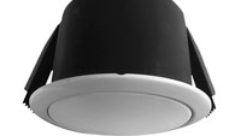Understanding EN 54
Jan 23, 2012 12:31 PM
Mass Notification Supplement
Systems Integration and the NFPA 72 Code
Product: Atlas Sound ControlKom 2.0
What is EN 54? European standard 54 specifies the requirements for all parts of fire alarm systems. Parts 4, 16, and 24 are the most applicable specifications to AV systems manufacturing. Part 4 specifies power supply requirements for the system; part 16 specifies voice alarm control and indicating equipment requirements; and most notably, part 24 specifies criteria for loudspeakers intended to broadcast alerts.
A CLOSER LOOK AT EN 54-4 and EN 54-24
SOURCE: British Standards Institution
EN 54-4
EN54-4 specifies requirements and methods of test and performance criteria for power supply equipment of fire detection and fire alarm systems installed in buildings. This standard does not cover the power supplies for self-contained smoke alarms or the battery-powered parts of wire-free detection and fire alarm systems. Requirements are given on power sources, functions, power supply from the main power source and the standby power source, chargers, faults, materials, design and manufacture, documentation, and marking. Tests covered by this standard include functional tests, test of the charger and the standby power source, environmental tests, cold (operational) tests, damp heat, steady state tests, impact tests, and endurance tests.
EN 54-24
BS EN 54-24 specifies requirements, test methods, and performance criteria for loudspeakers intended to broadcast a warning of fire between a fire detection and fire alarm system and the occupants of a building.
The primary reason for using a voice alarm system instead of the coded warnings given by sounders is to reduce the time taken for those at risk to recognize that an emergency exists, and to give clear instructions on what to do next. This means that voice alarm loudspeakers need to achieve a minimum acoustical performance, as well as constructional and environmental requirements, to be suitable for use in fire detection and fire alarm systems.
BS EN 54-24 recognizes that the exact nature of the acoustical requirements for voice alarm loudspeakers will vary according to the nature of the space into which there are installed. It therefore specifies the minimum requirements that apply to voice alarm loudspeakers and a common method for testing their operational performance against parameters specified by the manufacturers.
This European Standard gives common requirements for the construction and robustness of voice alarm loudspeakers as well as their performance under climatic and mechanical conditions that are likely to occur in the service environment. As the types of loudspeaker considered in this European Standard are passive electromechanical devices not involving sensitive electronic circuits, electromagnetic compatibility (EMC) tests have not been included. The loudspeakers have been classified in either an indoor or an outdoor application environment category.
This European Standard requires that manufacturers specify certain characteristics in a consistent manner so that designers can make objective decisions about which loudspeaker to use in specific applications.
This European Standard does not cover loudspeakers for special applications, for example, loudspeaker for use in hazardous applications, if such applications require additional or other requirements or tests than those given in this European Standard. This European Standard is not intended to cover addressable loudspeakers and loudspeakers with active components.








